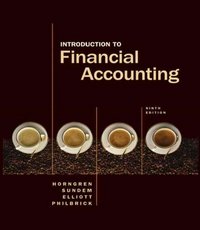LIFO, FIFO, Purchase Decisions, and Earnings per Share Iowa Seed Corn Supplies, a company with 100,000 shares
Question:
LIFO, FIFO, Purchase Decisions, and Earnings per Share Iowa Seed Corn Supplies, a company with 100,000 shares of common stock outstanding, had the following transactions during 20X1, its first year in business: Sales Purchases 1,100,000 pounds @ $5 900,000 pounds @ $2 300,000 pounds @ $3 The current income tax rate is a flat 50%; the rate next year is expected to be 40%. It is December 20 and Lane Braxton, the president, is trying to decide whether to buy the 400,000 pounds he needs for inventory now or early next year. The current price is $4 per unit. Prices on inven- tory are expected to remain stable; in any event, no decline in prices is anticipated. Braxton has not chosen an inventory method as yet, but will pick either LIFO or FIFO. Other expenses for the year will be $1.4 million.
1. By using LIFO, prepare a comparative income statement assuming the 400,000 pounds
(a) are not purchased and
(b) are purchased. The statement should end with reported earnings per share. 2. Repeat requirement 1, using FIFO. 3. Comment on the preceding results. Which method should Braxton choose? Why? Be specific. 4. Suppose that in year two the tax rate drops to 40%, prices remain stable, 1.1 million pounds are sold @ $5, enough pounds are purchased at $4 so the ending inventory will be 700,000 pounds, and other expenses are reduced to $800,000.
a. Prepare a comparative income statement for the second year showing the impact of each of the four alternatives on net income and earnings per share for the second year.
b. Explain any differences in net income that you encounter among the four alternatives.
c. Why is there a difference in ending inventory values under LIFO, even though the same amount of physical inventory is in stock?
d. What is the total cash outflow for income taxes for the 2 years together under the four alternatives?
e. Would you change your answer in requirement 3 now that you have completed require- ment 4? Why?
Step by Step Answer:

Introduction To Financial Accounting
ISBN: 0131479725
9th Edition
Authors: Charles T Horngren, John A Elliott





